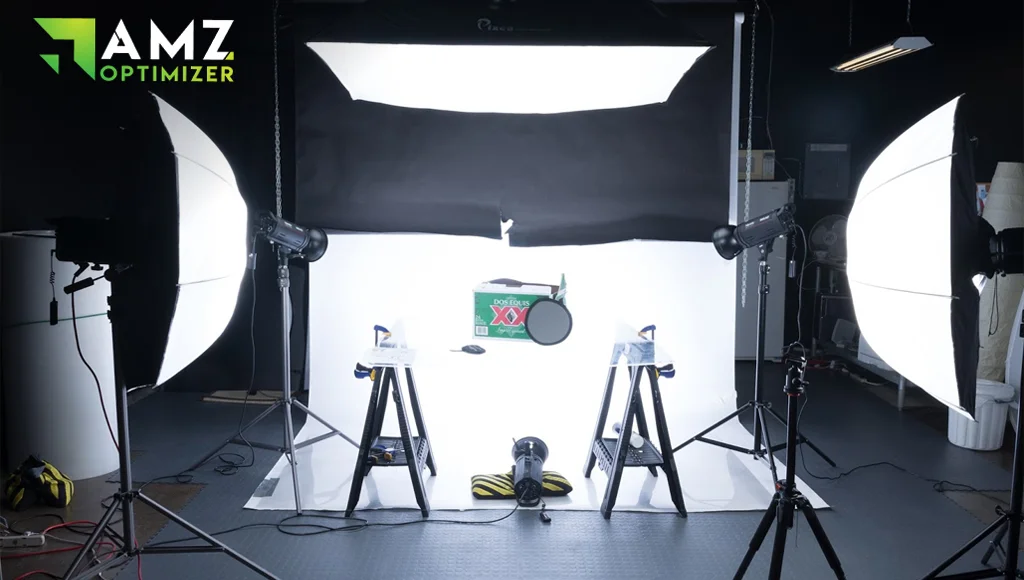
November 1, 2023
How Lighting Techniques Impact Amazon Product Photography
The success of an Amazon product listing often depends on the quality of its images. When it comes to creating those fascinating visuals, lighting is a force to be reckoned with.
The Art of Lighting in Product Photography
Lighting is the master key that unlocks a world of possibilities for photographers, allowing them to transform ordinary objects into compelling subjects. The interaction of light and shadows, highlights and gradients, can shape the appearance of a product and evoke emotions in customers.
Understanding the technical characteristics of lighting, such as color temperature, intensity, and direction, is part of the science. It is about understanding how to leverage such technical characteristics to express a specific message or emotion.
For instance, a soft, diffused light source can make a product appear friendly and approachable, while harsh, directional light can create a sense of drama. To make matters even more complicated, different items necessitate different lighting configurations. Photographing a fabric-based product is very different from photographing a glossy, reflective object like a glass bottle. To bring out the best features of each product, a distinct strategy is required.
Natural Light vs. Studio Lighting: Pros and Cons
The choice between natural light and studio lighting is a critical decision. Each has its own set of advantages and drawbacks, and the right choice depends on your specific product, the image you want to convey, and the resources at your disposal.
Pros of Natural Light
Natural light may add a sense of authenticity to your product, making it appear as it would in the actual world. It's inexpensive because it doesn't cost anything - the sun is the most affordable light source available. Natural light may be beautifully soft and diffused depending on the weather and time of day, minimizing harsh shadows and generating an inviting glow.

Cons of Natural Light
The absence of control, on the other hand, is a huge disadvantage. You cannot control the sun, and weather, time of day, and other external elements can all have an impact on the quality of your light. Furthermore, you are limited to daylight hours, which might be difficult if you are trying to maintain a consistent appearance for a product line or need to shoot at night.
Pros of Studio Lighting
Studio lighting, on the other hand, gives you complete control over the lighting environment, allowing you to achieve the exact appearance you want. It maintains consistency, allowing you to attain the same outcomes day or night, regardless of the weather. Studio sets can be customized to accommodate a wide variety of product kinds and photographic styles.

Cons of Studio Lighting
However, there are several disadvantages to studio lighting. Quality studio lighting equipment can be costly, and the initial setup fees might be prohibitively expensive for individuals on a limited budget. Furthermore, efficiently employing studio lighting necessitates knowing the technical components, which might take time and practice.
The Role of Shadows
Shadows are frequently associated with gloom and obscurity, but they play a vital role in producing depth, dimension, and visual interest in Amazon product photography. Shadows, when used correctly, can transform a two-dimensional image into a fascinating, lifelike portrayal of a product.
Shadows provide depth to a product photograph. They give the illusion of space, giving the product a three-dimensional appearance. This level of detail can make the product feel more tangible and real to prospective purchasers. It aids in the definition of the product's shape and form. They draw outlines, curves, and features to help visitors grasp the physical characteristics of the object.
Shadows have the ability to express texture and surface information. With the appropriate shadow arrangement, for example, the texture of fabric, the grain of wood, or the shine of glass become more pronounced. You can attract attention to key characteristics of the product by strategically applying shadows. Shadows can direct the viewer's attention to key areas such as a product's brand, a distinguishing design element, or functional components.

Shadows also contribute to an image's overall tone. Soft, diffused shadows can create a welcoming ambiance, yet dramatic, strong shadows might provoke interest or passion.
Color Temperature
It's the secret ingredient that can make your images radiate warmth or exude a cool, modern feel. Understanding and harnessing color temperature can help you create product photos that resonate with your target audience.
Warm vs. Cool Light
The concept of color temperature refers to the warmth or coolness of light. It's measured in Kelvin (K). Lower Kelvin values, such as 2700K, produce warm, yellowish light reminiscent of a cozy home environment. Higher Kelvin values, like 5000K, emit cool, bluish light, evoking a more clinical, modern ambiance.
Setting the Mood
The color temperature chosen can have a considerable impact on how a product is viewed. Warm lighting may make a product appear more inviting, comfortable, and homey. It's frequently used for things related to relaxation, comfort, and tradition. Cool light, on the other hand, can give a product a sleek, professional, and modern image. It's appropriate for electronic gadgets, fashion, and products aimed for a modern audience.
Consider Your Brand
Your brand identity and the message you want to convey should guide your color temperature choices. If your brand is all about innovation and cutting-edge technology, cooler light may align with your values. On the other hand, if your brand represents tradition and time-honored quality, warmer light can enhance that perception.
Avoiding Common Lighting Mistakes
Lighting in Amazon product photography may boost your product shots to a professional level, but when done incorrectly, it can lead to frequent blunders that detract from the quality of your photos.

Overexposure
Overexposed images appear excessively bright, with loss of detail and clarity in the product. This can happen when too much light floods the scene.
Adjust the lighting intensity or distance to balance the exposure. Consider using diffusers or bouncing the light off reflective surfaces to soften it.
Harsh Shadows
Harsh, unattractive shadows can make a product appear uninviting or obscure essential details.
Soften the light source, adjust its angle, or use diffusers to reduce shadow harshness. Consider additional fill lights to balance shadows.
Color Casts
Color casts occur when the lighting imparts unwanted hues or tints to the product, distorting its true colors.
Ensure consistent color temperature in your lighting setup. Correct color casts in post-processing, or use color correction tools and gels.
Glare and Reflections
Glare and reflections can obscure the product or create distracting highlights on reflective surfaces.
Adjust the angle of the lighting or use polarizing filters to reduce glare and reflections. Experiment with diffusers and softboxes.
Inadequate Lighting
Poorly lit images lack clarity and detail, making it challenging for customers to see the product.
Use additional lighting sources to fill in shadows and ensure even illumination. Consider investing in quality lighting equipment.
Inconsistent Lighting
Inconsistent lighting across a series of product images can make your Amazon store appear unprofessional and disjointed.
Maintain consistent lighting conditions throughout your photo sessions. Use light meters to ensure uniform exposure.
Enlightening Your Amazon Listings with Effective Lighting
The visual appeal of your Amazon product listings can make or break your success. Effective lighting is the key to creating images that not only showcase your products but also engage and entice potential customers.
From the choice between natural light and studio lighting to the pivotal role of shadows and color temperature you've gained insights into how to harness these techniques to your advantage. We've also addressed common lighting mistakes and how to overcome them, ensuring that your product photos are of the highest quality, free from overexposure, harsh shadows, color casts, glare, or inadequate lighting.
Effective lighting is more than just illuminating a product; it is also about presenting a story. It's all about creating an image that connects with your target audience, communicates your brand message, and ultimately drives sales. Keep in mind that perfecting the art of Amazon product photography is a never-ending effort. It takes practice, experimenting, and an attention to detail. Your product listings will shine brighter as you continue to hone your talents, and your business will thrive.
Recent Blogs

Seasonal Products for Your Amazon Business: Is It a Good Choice?
Every Amazon seller ask this question: Should I launch a seasonal or perennial product? This common confusion is understandable. ...

Mastering the Amazon Product Title: Best Practices, Rules, and Optimization Tips
When it comes to selling on Amazon, your Amazon product title is one of the most powerful elements that can make or break ...

Amazon Prime Days 2025 - Everything You Need to Know
Amazon Prime Days 2025 are expected to be bigger, better, and more competitive than ever before. Whether you're a ...

How to Earn the Amazon Best Seller Badge and Skyrocket Your Sales
In the highly competitive Amazon marketplace, every seller dreams of having their product stand out. One of the most ...

Amazon FBA or FBM: Which Fulfillment Method is Right for Your Business?
Deciding whether Amazon FBA or FBM is the best option for your online store is one of the most crucial decisions ...